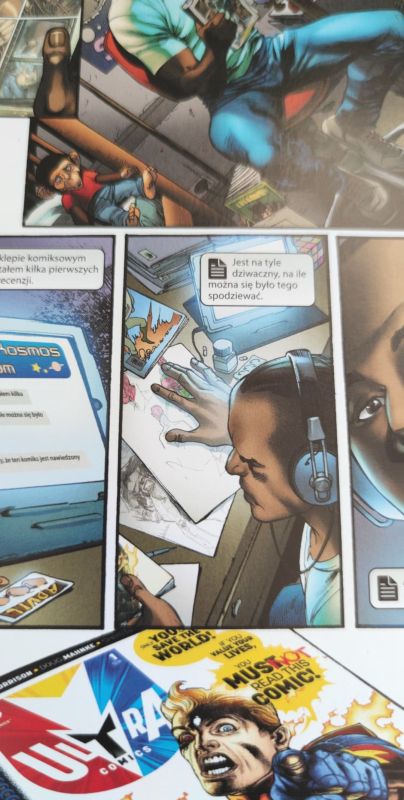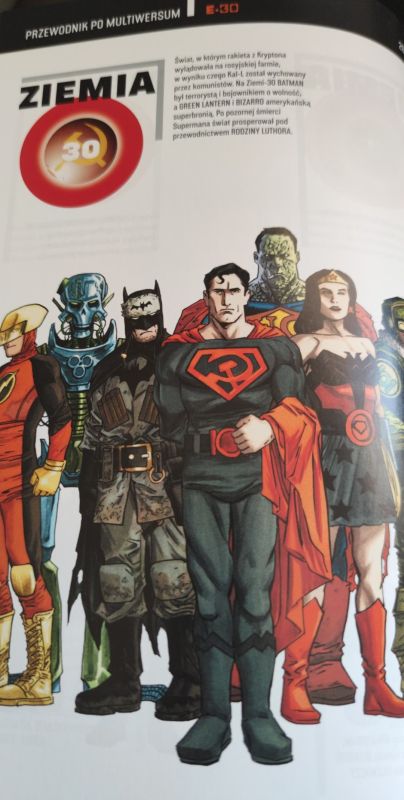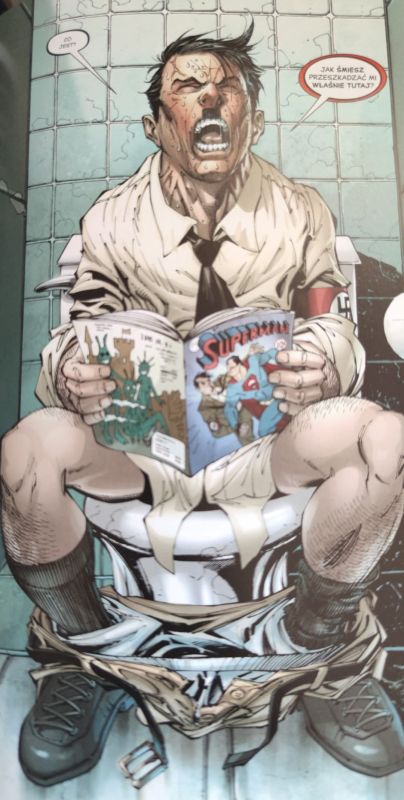Who, being a huge comic fan, doesn't know Grant Morrison? Probably no one. You may or may not like his work, but you don't pass by indifferently. One of such works is certainly the Multiverse.
An experience unlike any other
The Scottish artist certainly has many ideas about alternative realities presented through the comic book medium. Thanks to this combination, we do not need VR glasses at all. We find out about it in the short series Multiwersum from 2014 , which was recently published in our country by Egmont.
Morrison vanishes the “reality” of the superheroes again, and at the same time we are lost. The book focuses on a new kind of Justice League: one that includes not only the greatest heroes in the universe, but the greatest daredevils in any parallel DC universe, and the universe includes as many as 52 parallel realities. Each with their own unique story about our beloved knitwear.
The concept of the multiverse is not new at all, it has been developing since the 1960s, but so far we did not know much about it. She first appeared in the Crisis in the Infinite Lands . The multiverse is a tribute to many stories and their creators, who often presented their versions of Batman or Superman. How to combine it into one whole? It’s best to show that they’re part of something bigger. Something flexible enough to take any form and fit all the narratives to its continuum. It is also a test field that allows you to check how law enforcement officers will behave in unusual conditions, while maintaining their “real” adventures.
This narrative experimentation has another added benefit. The newly defined heroes become a huge multicultural conglomerate, showing us that they are closer to our everyday life than we might think. In this way, we get a female version of Aquaman, a gay Flash and a hero straight from Australian aboriginal beliefs. Superman – the symbol of America is not only a white man. Doesn’t he also represent the African Americans who suffered so much up until the time of the Civil War? Then meet Calvin Ellis. After all, each of us can be a superhero!

What is the comic actually about?
This is one big story composed of several independent comic book narratives. The first character we meet is Nix Uotan – the Super Judge, the last representative of the Monitors. Its task is to defend the Multiverse against unimaginable dangers. This character is certainly known to most DC Comics readers, because he appeared in The Last Crisis.
The Monitor will gather heroes from other lands to form the most powerful squad to date, including African-American President Superman and Captain Carrot. Of course, in order not to fly too far in this ecstasy, we get a center that allows us to move into other worlds. It is the House of Heroes.
It is worth adding that we are dealing with a meta-narrative, because the comic takes place in the comic itself. Therefore, everything is possible and the level of abstraction is multiplied. Comic book physics is subject to greater deformation, and what has limited us so far is far away. An interesting element is also that we have a lot of comic book references. We will even meet caricatures of the Avengers or the Fantastic Four, and each reality is portrayed by a different cartoonist to give this unusual universe depth. Interesting variations on the characters of the DC universe include animal characters from Earth-26, the Zombie version from Earth-29, post-apocalyptic pirates and the vampire League of Blood.

What can such a comic teach me?
Contrary to appearances, a lot. The fashion for alternative versions of events has been on the rise recently when it comes to fantasy creators. When we move the history alternation process with a few unreal elements, we can still get outstanding history lessons. Namely what? The historical alternative, through the occurrence of the same causes of processes, but different courses and consequences, shows in some way how important were the reasons for the occurrence of the event and not other. Thanks especially for posting the Nazi Superman story! Most of us know the story of the Red Son. Nevertheless, the Nicoisean concept of the superman is somewhat divergent from the Marxist theory of society. Now we can fully observe how Übermensch is used by a community that claims to be superhumans, and Karl Kant is a mysterious weapon that was supposed to bring victory to the Third Reich.

Will I get lost in the sheer volume of events?
This is where the problem arises. If you only like Batman or Superman, then unfortunately you can easily get lost. It’s worth knowing most of the DC Universe t-shirts for you, otherwise you may have trouble understanding who the heroes actually are and what they do. There may not be any mental shortcuts in the plot, but the gaps in knowledge regarding most of the iconic knitwear can make the reader feel confused. The role of the plot and the course of events is rather of secondary importance. Nevertheless, I encourage you to read this unique story in its class. In addition to the many extras that are concept art, the Multiverse map and a quick planetary guide have also been released.
Finally, the question: Why was such a work created at all? Well, it was worth recalling at the time of New 52 ‘s release that there was still a grand DC universe after Flashpoint, and telling some stories going on in “lands” that have been marginalized or ignored until now. It would be hard to write an appropriate beginner’s guide to help you understand the Multiverse, but it is worth reaching for this title and getting carried away on the most wonderful reading journey. Marvel has nothing to envy.

